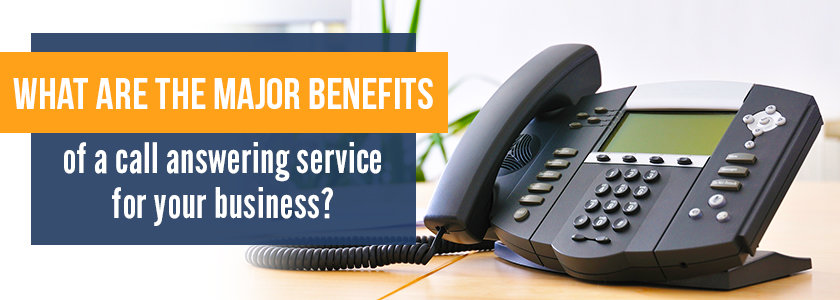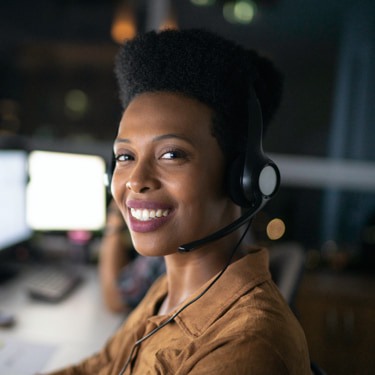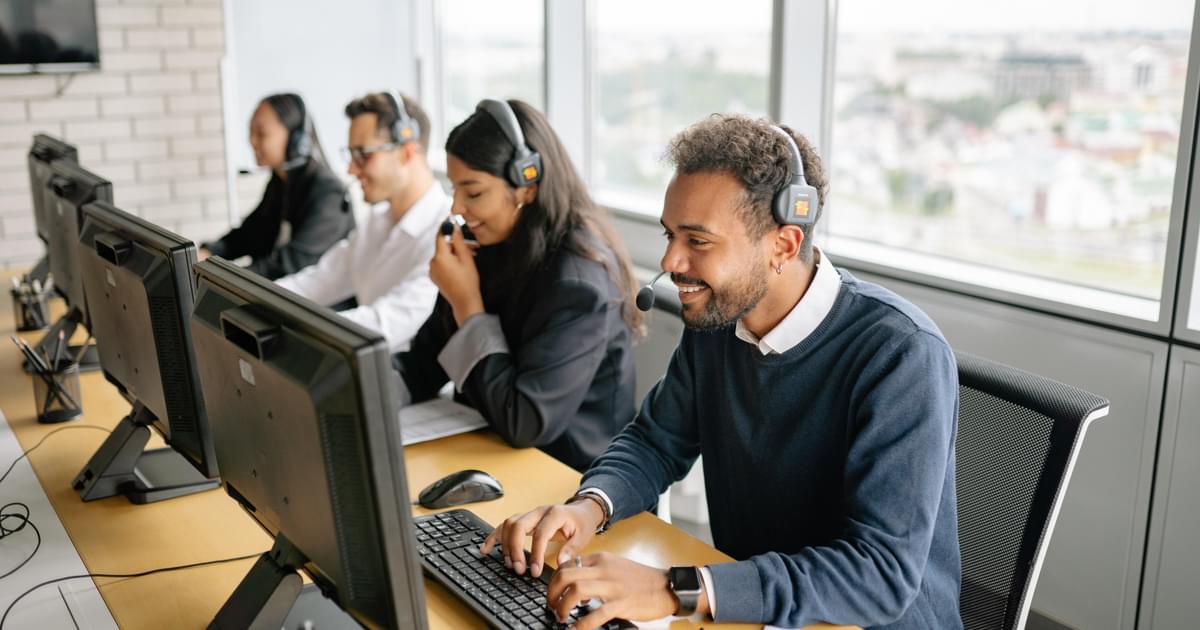All Categories
Featured
Table of Contents
- – The Best What Is A Phone Answering Service, And...
- – Which Is The Best Answering Service Operator: ...
- – Whats The Best Telephone Answering Service: Wh...
- – Best 10 Sectors That Can Benefits From A Phon...
- – What Is The Best Phone Answering Services To ...
- – What Is The Best Answering Service Faqs - Qu...
The Best What Is A Phone Answering Service, And How Does It Work? Service?
This device and its followers were designed by Sava Jacobson, an electrical engineer with a personal consulting organization. While early answering machines used magnetic tape technology, the majority of modern-day devices utilizes solid state memory storage; some devices utilize a combination of both, with a solid-state circuit for the outgoing message and a cassette for the inbound messages.
"toll saving" below) (business answering service). This works if the owner is evaluating calls and does not want to talk with all callers. In any case after going, the calling celebration must be informed about the call having been responded to (most of the times this begins the charging), either by some remark of the operator, or by some welcoming message of the TAD, or dealt with to non-human callers (e.
This holds specifically for the TADs with digitally kept welcoming messages or for earlier makers (prior to the increase of microcassettes) with a special unlimited loop tape, different from a second cassette, dedicated to recording. There have been answer-only gadgets with no recording abilities, where the greeting message had to inform callers of a state of current unattainability, or e (virtual call answering service).
Which Is The Best Answering Service Operator: What Is It? And How To ... Company

about availability hours. In taping TADs the greeting normally includes an invitation to leave a message "after the beep". An answering machine that utilizes a microcassette to record messages On a dual-cassette answerphone, there is an outbound cassette, which after the specified variety of rings plays a pre-recorded message to the caller.

Single-cassette voice mail include the outgoing message at the start of the tape and inbound messages on the staying space. They first play the statement, then fast-forward to the next available area for recording, then tape the caller's message. If there are lots of previous messages, fast-forwarding through them can cause a substantial delay.
This beep is often described in the greeting message, requesting that the caller leave a message "after the beep". Little bits with digital storage for the taped messages do not show this delay, of course. A little might use a push-button control facility, whereby the answerphone owner can call the home number and, by going into a code on the remote telephone's keypad, can listen to recorded messages, or erase them, even when away from house.
Whats The Best Telephone Answering Service: What It Is And Why It Isn't Enough To Buy

Consequently the maker increases the number of rings after which it answers the call (usually by 2, resulting in four rings), if no unread messages are currently kept, but responses after the set variety of rings (usually 2) if there are unread messages. This permits the owner to find out whether there are messages waiting; if there are none, the owner can hang up the phone on the, e.
Some devices also enable themselves to be remotely activated, if they have been turned off, by calling and letting the phone ring a particular big number of times (generally 10-15). Some provider abandon calls already after a smaller variety of rings, making remote activation impossible. In the early days of Little bits an unique transmitter for DTMF tones (dual-tone multi-frequency signalling) was regionally required for remote control, because the previously utilized pulse dialling is not apt to communicate proper signalling along an active connection, and the dual-tone multi-frequency signalling was implemented step-by-step.
Any incoming call is not identifiable with respect to these residential or commercial properties in advance of going "off hook" by the terminal equipment. So after going off hook the calls should be changed to appropriate gadgets and only the voice-type is instantly accessible to a human, but possibly, however ought to be routed to a TAD (e.
Best 10 Sectors That Can Benefits From A Phone Answering Service Showroom Near Me
What if I told you that you do not need to in fact get your gadget when responding to a consumer call? Someone else will. So hassle-free, right? Addressing call does not need somebody to be on the other end of the line. Efficient automated phone systems can do the trick simply as efficiently as a live agent and often even better.
An automated answering service or interactive voice action system is a phone system that interacts with callers without a live person on the line - virtual telephone answering. When companies use this technology, customers can get the answer to a question about your company simply by using interactions established on a pre-programmed call circulation.
Although live operators upgrade the client service experience, numerous calls do not require human interaction. An easy taped message or guidelines on how a customer can obtain a piece of info usually resolves a caller's instant requirement - virtual telephone answering. Automated answering services are a basic and efficient method to direct inbound calls to the best person.
What Is The Best Phone Answering Services To Buy In 2023?
Notification that when you call a company, either for assistance or product query, the very first thing you will hear is a pre-recorded voice greeting and a series of alternatives like press 1 for customer support, press 2 for queries, and so on. The pre-recorded alternatives branch out to other choices depending upon the customer's selection.
The phone tree system helps direct callers to the right individual or department utilizing the keypad on a mobile phone. In some circumstances, callers can utilize their voices. It deserves keeping in mind that auto-attendant alternatives aren't limited to the 10 numbers on a phone's keypad. As soon as the caller has actually picked their very first option, you can design a multi-level auto-attendant that utilizes sub-menus to direct the caller to the ideal sort of support.
The caller does not have to communicate with an individual if the auto-attendant phone system can handle their concern. The automatic service can path callers to a staff member if they reach a "dead end" and need assistance from a live agent. It is costly to hire an operator or executive assistant.
What Is The Best Answering Service Faqs - Questions & Answers Available Today
Automated answering services, on the other hand, are significantly more economical and offer significant expense savings at an average of $200-$420/month. Even if you don't have actually committed staff to handle call routing and management, an automatic answering service improves productivity by allowing your team to focus on their strengths so they can more effectively invest their time on the phone.
A sales lead routed to customer care is a lost shot. If a customer who has product concerns reaches the wrong department or gets insufficient responses from well-meaning employees who are less trained to manage a particular type of question, it can be a reason for disappointment and dissatisfaction. An automated answering system can reduce the variety of misrouted calls, thus helping your staff members make much better usage of their phone time while maximizing time in their calendar for other tasks.
With Automated Answering Systems, you can produce an individualized experience for both your staff and your callers. Make a recording of your main welcoming, and simply update it regularly to reflect what is going on in your organization. You can produce as lots of departments or menu alternatives as you want.
Table of Contents
- – The Best What Is A Phone Answering Service, And...
- – Which Is The Best Answering Service Operator: ...
- – Whats The Best Telephone Answering Service: Wh...
- – Best 10 Sectors That Can Benefits From A Phon...
- – What Is The Best Phone Answering Services To ...
- – What Is The Best Answering Service Faqs - Qu...
Latest Posts
After Hours Answering
Preferred Live Phone Answering Near Me ( Australia 4101)
Fast Ai Answering System Near Me – TAS
More
Latest Posts
After Hours Answering
Preferred Live Phone Answering Near Me ( Australia 4101)
Fast Ai Answering System Near Me – TAS